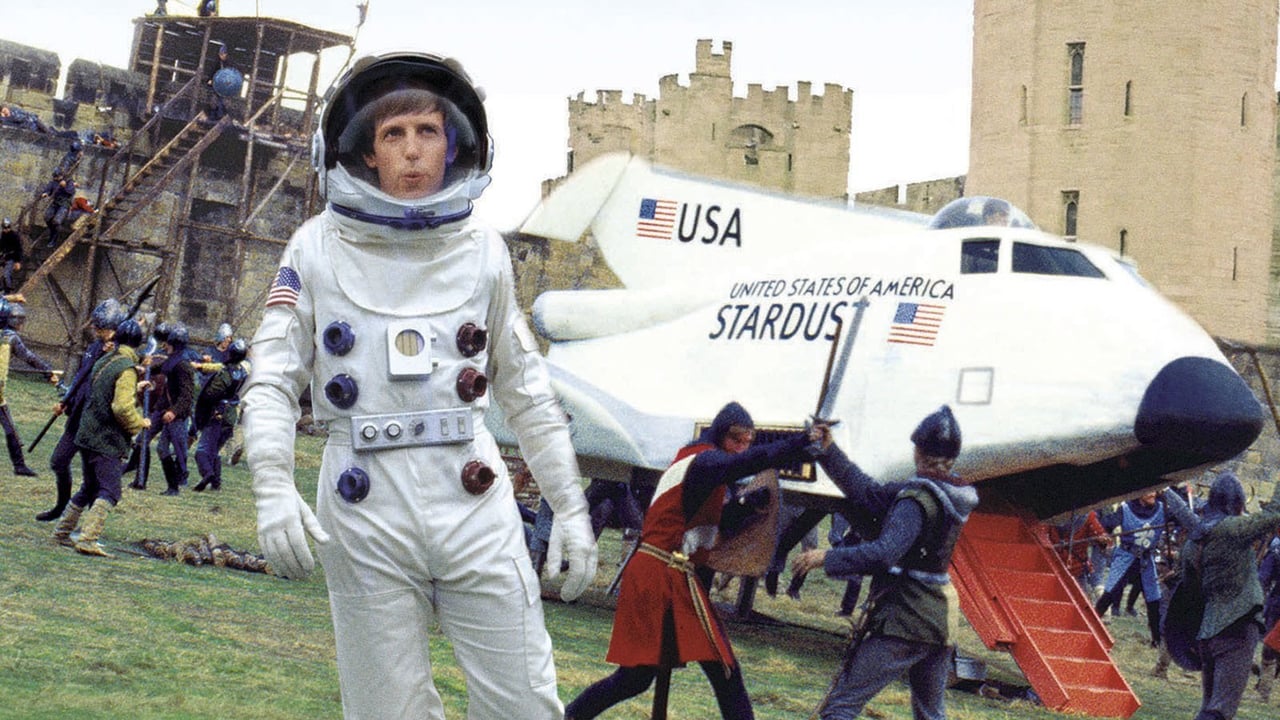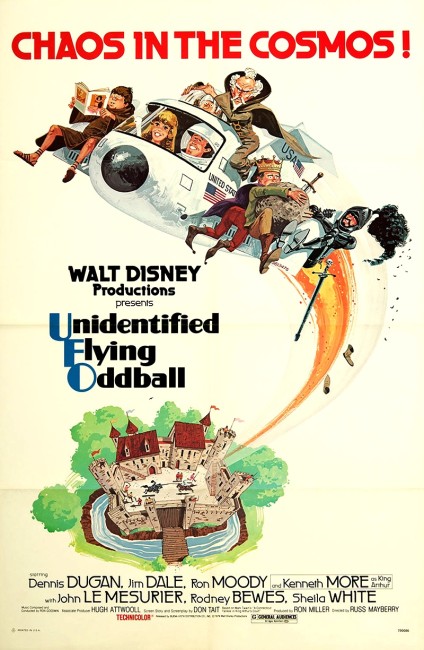aka The Spaceman and King Arthur
USA. 1979.
Crew
Director – Russ Mayberry, Screenplay – Don Tait, Based on the Novel A Connecticut Yankee in King Arthur’s Court by Mark Twain, Producer – Ron Miller, Photography – Paul Beeson, Music – Ron Goodwin, Photographic Effects – Cliff Culley, Mechanical Effects – Ron Ballinger & Michael Collins, Makeup – Roy Aston & Ernie Gasser, Art Direction – Paul Witherick. Production Company – Disney.
Cast
Dennis Dugan (Tom Trimble/Hermes), Sheila White (Alisande), Jim Dale (Sir Mordred), Kenneth More (King Arthur), Ron Moody (Merlin), Rodney Bewes (Clarence), John le Mesurier (Sir Gawain)
Plot
Plans are made to launch the faster-than-light space shuttle Stardust but a senator refuses to allow American men to undergo such a dangerous mission. And so roboticist Tom Trimble builds the android Hermes in his own image to perform the mission. However, lightning hits the launchpad and both Tom and Hermes are accidentally launched inside the shuttle. Tom’s attempts to turn the shuttle around in orbit cause time to reverse. He lands in Cornwall in the year 508 A.D. where he is captured and taken to Camelot. There Tom is able to use modern technological marvels to dazzle King Arthur and the people of the court. He must then save the kingdom from the schemings of the villainous Sir Mordred and the fraudulent magician Merlin.
Unidentified Flying Oddball was the fourth cinematic adaptation of Mark Twain’s A Connecticut Yankee in King Arthur’s Court (1889), a comic story that contrasts modern Yankee knowhow up against English myth. (See below for the other film versions).
The previous film adaptations of the story relied heavily on the Vaudeville tradition, being comic in tone and usually having songs. However, in this Disney comedy, as the alternate title The Spaceman and King Arthur implies, the Mark Twain story gets a considerable overhaul for the post-Star Wars (1977) era.
Now Mark Twain’s man of Yankee know-how’s conventional arsenal of magnifying glasses and books of matches has been replaced with space shuttles, android doubles, laser guns, Moon buggies and rocket packs. Indeed, bar the basic setting and the court politicking, there is little of Twain that is recognisable any longer. Nevertheless, the annoyingly jingoistic tone of the previous film versions remains – the wiggist notion of a technically superior wiseass conducting technological marvels before ignorant peasants, plus the tendency to reduce the characters of Arthurian myth to buffoonish figures.

It is all light and innocuous comedy in the Disney tradition that was in vogue in the 1960s/70s – and entirely predictable. The effects are weak. The demonstration lecture about the planned Stardust mission at the beginning contains a surprisingly accurate detailing of the workings of a ramscoop drive – what a peculiar film in which to find such an advanced idea spelt out.
Other versions of the Mark Twain story are:– A Connecticut Yankee in King Arthur’s Court (1921), A Connecticut Yankee (1931), A Connecticut Yankee in King Arthur’s Court (1949), A Connecticut Yankee in King Arthur’s Court (tv movie, 1978), A Connecticut Yankee in King Arthur’s Court (tv movie, 1989), A Kid in King Arthur’s Court (1995), A Young Connecticut Yankee in King Arthur’s Court (1995), A Knight in Camelot (1998) and Black Knight (2001). There was even a Bugs Bunny version A Connecticut Rabbit in King Arthur’s Court (1978).
Trailer here


